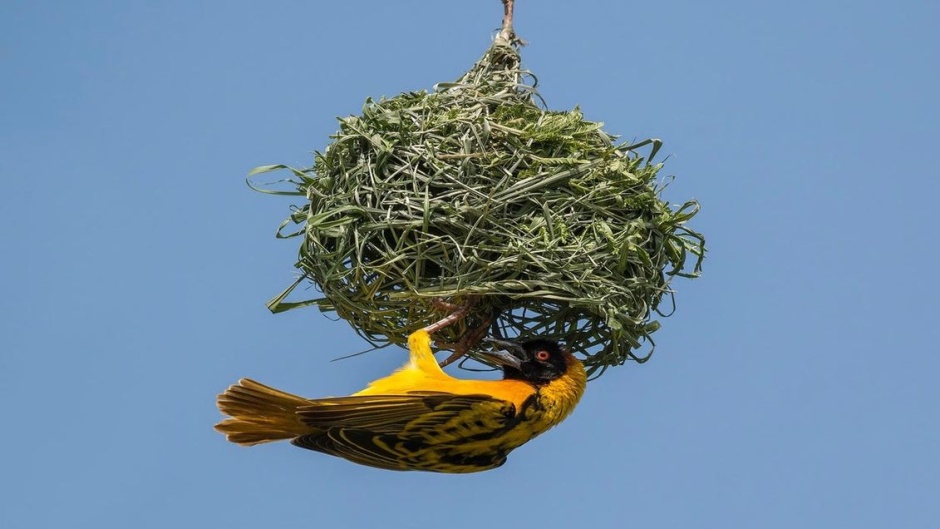Who teaches the weaver?
More than 60 different species of weavers are found in Sub Saharan Africa, tropical Asia and Australia. The nests can vary in shape, size, material and building technique.
01 JANUARY 2023 · 11:00 CET

The village weaver (Ploceus cucullatus) is an African bird, and a member of the Ploceidae family, famous for building large hanging nests at the end of tree branches, made of strands of grass woven together.
These hanging nests are entered from below, and they are believed to be among the most elaborate built by any bird anywhere. More than 60 different species of weavers belonging to the same Placeus genus scattered throughout Sub Saharan Africa, tropical Asia and Australia. The nests can vary in shape, size, material and building technique, depending on the species of weaver. Those that breed in colonies can create elaborate networks of nests capable of housing up to 300 pairs in the same tree.
The huge variety of nests built by birds has always attracted the attention of naturalists. There is even a discipline known as “caliology”, which studies the shelters, burrows and nests made by animals. Generally speaking this building skill has been attributed to the species’ innate instincts which, though some individuals can make improvements during the course of their lives through imitation, repetition or learning, but have been preconfigured beforehand in their genetic code.
How could this information have been generated by chance during a process of natural selection? Charles Darwin himself admitted, at the beginning of chapter 8 of The Origin of Species, that: “MANY instincts are so wonderful that their development will probably appear to the reader a difficulty sufficient to overthrow my whole theory.” [1] Despite which he did believe that natural selection could have been the cause of such instincts.
However, believing something is not the same as demonstrating it, and the truth is that to the present day, more than 160 years after Darwin, no one has been able to explain satisfactorily how certain animals are capable of performing such fascinating feats of engineering. It is true that there are many speculations in this regard, but no formal conclusion has been reached concerning the real origin of these instincts.
Darwin concluded the chapter about instincts with the following words: “Finally, it may not be a logical deduction, but to my imagination it is far more satisfactory to look at such instincts (…) not as specially endowed or created instincts, but as small consequences of one general law leading to the advancement of all organic beings namely, multiply, vary, let the strongest live and the weakest die.” [2]
The father of Darwinism preferred to believe that animal instincts emerged through evolution, despite this not being a “logical deduction”, rather than accept that they had been created specifically by the Creator-Weaver, just as he had also “set eternity in the human heart, yet no one can fathom what God has done from beginning to end” (Ecclesiastes 3:11).
Notes
[1] Darwin, The Origin of Species
[2] Ibid
Published in: Evangelical Focus - Zoe - Who teaches the weaver?
